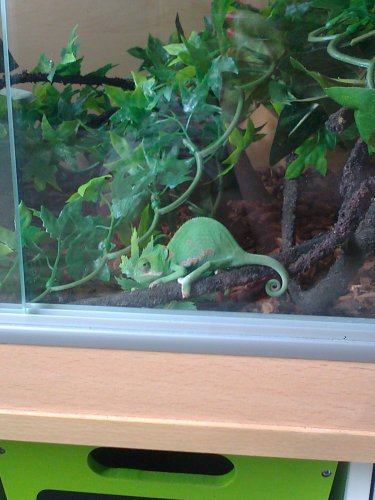EmilyChameleon
New Member
Hi all 
Just joined this website - What a lovely one it is too with everybodies beautiful chameleons.
with everybodies beautiful chameleons.
Thought i'd show you my Chameleon + his house.
He has slight MBD but is doing well as I caught it early due to spending 2 years on an animal care college course thank goodness.
but is doing well as I caught it early due to spending 2 years on an animal care college course thank goodness.
Everybody meet Merlin (There's a few photos of him getting bigger)
Just joined this website - What a lovely one it is too
Thought i'd show you my Chameleon + his house.
He has slight MBD
Everybody meet Merlin (There's a few photos of him getting bigger)





